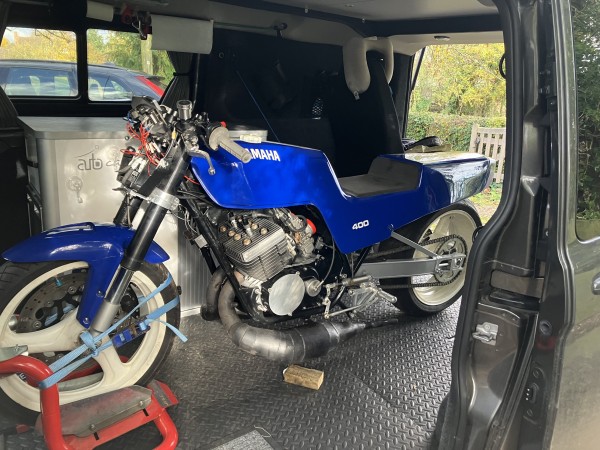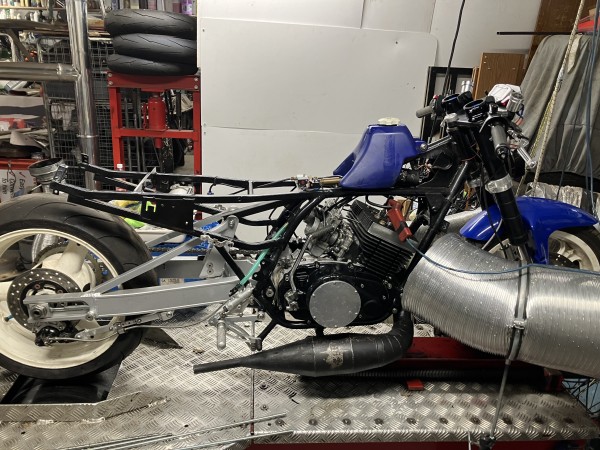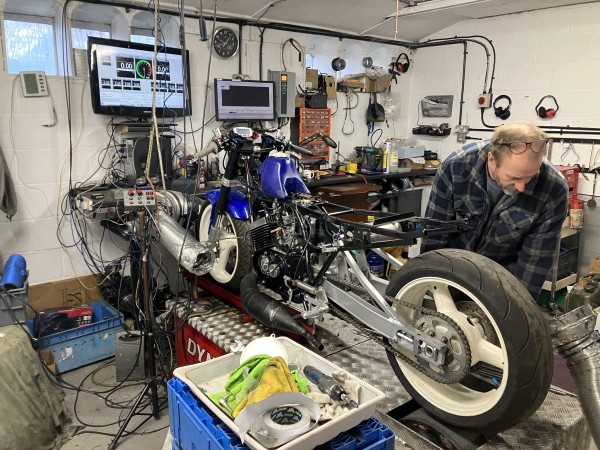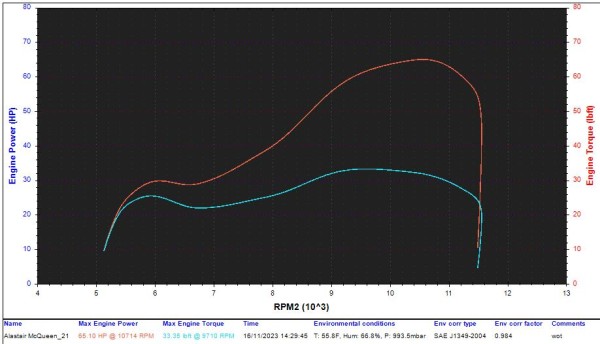Dyno session now done and we learned a lot in the 6hrs we were there and we now have a safe setting on jetting and ignition timing.

- Loaded and ready for the big day
As usual when you are paying for dyno time, the bike decides to get moody and both carbs are pissing fuel before we start… they were fine when I checked 3 days before!!!!!. That took an hour to fix and then we were running again and the 1st run.

- Strapped to the dyno pissing fuel
Run 1 it became clear that the bike wouldn’t rev through, so was the jetting to rich or too lean? The fueling was so far out that the mixture sensors were giving both rich and lean signals as it misfired and was dumping unburned fuel and oxygen into the exhaust.

- Dyno time
When i got the bike, John, the guy that owned it, said that he had dynoed it with 500 jets in it and they stopped it on the 1st run as the operator said it was way too lean, so he took it away and put 650 jets into it but then it never ran again. my dyno guy said that this is what happens when a 4 stroke dyno guy looks at the exhaust gas signals from a misfiring 2stroke, and his instinct was that the carbs were set too rich.
So we started dropping the jet sizing bit by bit till we were down to 300 and the bike is revving right through to 12,000rpm (showing good power in the over rev). Now we have 3/4 and WOT setting that is safe, but we are a bit rich on 1/2 throttle setting that we cant get perfected with the needle and agree that 280 or 290 jets might be perfect in the warmer weather (but we don’t have any in the box to try).
Then it’s on to ignition timing.
When i spoke to Harry Barlow, who originally tuned the engine, he reccomened 18 deg before TDC at idle , which would retard to about 9 deg at peak power, and that was the starting point that we used for all the fueling runs.
Now we had jetting worked out, we tried firstly retarding the ignition by 4 deg, but that saw the power drop, so we advanced it by 4 degrees, and then another 4 degrees again, with the power curve getting better and better each time till we were about at 30deg at idle.
We then ran another fueling run to see if the improved ignition needed a change in jetting, but it still looked like good for the 280 / 290 type mains.
The final power figure of 65bhp was a bit lower than i was expecting (thought we would be 75!), but it looked like a very strong curve at all revs, not a crazy peaky narrow power band. so it will be good for getting off the start line as well as having a broad enough peak so it wont drop out of the power band too much as you go up the gears.

- Power curve
After that, the last job was to check if the air shifter system worked. This is a pneumatic system, fed from an aluminium bottle sitting behind the seat, charged up to 120psi. When you press the horn button a valve opens and the air pressure similtainiously actuates a momentry ignition kill solenoid to unload the engine and a larger air cylinder that actuates the gear shifter to change up a gear.
It kind of worked, but sometimes jumped back out of gear because the duration of the kill was not long enough for the gear to fully select. The problem being that the kill duration is controlled by how long you press the horn button, so I need to make sure I hold it down for long enough at each shift change, or get an electronic kill solution with a fixed timer duration that is triggered by the button press.
Overall a good days work and looks like the bike will be ready for a real sprint race next year.

